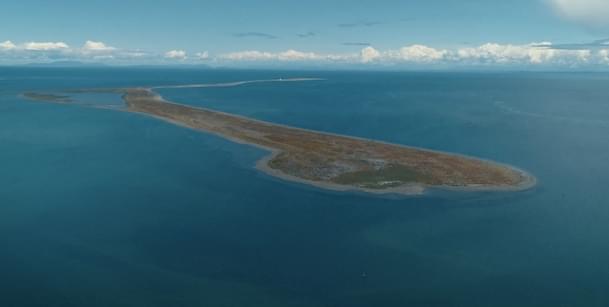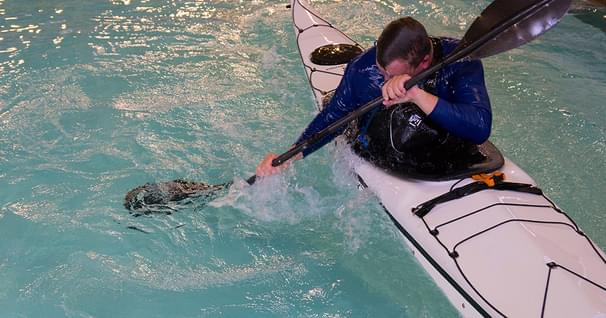Calling for Help
It's important to know when to call for help. If a situation isn't getting better, and you don't think you can get out of it on your own, remember that it's better to call for help too early than too late. Also, if you're out on the water well past the time you told your friends to worry, it's probably worth a call to let folks know whether you'll need help or not.
Before you go paddling, put the number of your nearest Coast Guard station in your phone. If you're in a part of the country where another agency handles the search and rescue, like your city's fire department, or the Fish and Wildlife Service, put that number in your phone. Now put your phone in a dry bag, or even a couple of Ziplocs, and bring it with you.
The local Coast Guard number can be found on their website. And in an emergency, a local 911 operator can connect you to the Coast Guard or other first responders in your area. While it’s a good idea to bring a cell phone, never count on it as your only way to call for help. Anyone who has ever dropped a call knows that cell phones don’t work all of the time or in every place.
Many sea kayakers choose to carry VHF radios that allow them to communicate with other boats and the Coast Guard. Consider getting one if you paddle frequently, for long distances, or over long periods of time, especially if there's limited or no cell service where you’re paddling. It’s always good to have at least two ways to call for help. Usually that’s a cell phone and a radio.
If you're paddling in a remote area, consider investing in a Personal Locator Beacon, or PLB, which uses satellites to send your exact position to rescue agencies.
Steps In An Emergency
If you're in an emergency, here are some steps that will help you and your rescuers.
First, don't leave your boat. It's often the most visible thing you have to potential rescuers.
If you're in a safe place, stay there. Signal for help using the tools you have. Best case is that you have a VHF marine radio or working cell phone. If so, use them. If not, wave your hands above your head at any boats in the area, while continuously blowing your rescue whistle to attract attention or signal emergency.
Use your signal mirror to reflect the sun towards other boats or the horizon in flashes of three.
Radio Protocol
Here's the proper radio protocol for calling the Coast Guard or other boats in an emergency. First, turn your VHF to channel 16, which is monitored by the Coast Guard. Repeat the word "Mayday" three times. Say, "This is" once. Then repeat the name of your vessel three times.
For example, if it's an un-named kayak, use a visual description, like red kayak. Repeat "Mayday" once more and the description of your kayak. Give your position. If you know your GPS coordinates, use those.
The next best thing is a compass bearing in a distance to a well-known landmark, such as a navigational aid or small island. If you don’t have a compass or GPS, describe your position as accurately as you can, state the nature of your distress, the kind of assistance needed, and the number of people in your group. Add any other information which might facilitate rescue – boat colors, and numbers, number of persons needing medical attention. Then say "over." Give the Coast Guard or other boaters a few moments to respond.
Here's an example:
"Mayday, Mayday, Mayday."
"This is blue sit on top kayak, blue sit on top kayak, blue sit on top kayak."
"Mayday, this is blue sit on top kayak."
"Cape Henry Light bears 185 degrees magnetic. Distance, two miles. Stranded on small rock island with rough seas."
"Need pickup. Three adults in separate kayaks. One person near hypothermia."
"Blue sit on top kayak is 11 feet long with two other kayaks in party, one green, one red."
"Over."
That's a great example of good radio protocol.
But if you can't remember exactly what to say, you can still call the Coast Guard.
Remember to always wear a Coast Guard approved life jacket, and that taking a class from a professional instructor is the best way to improve your paddling skills, meet other kayakers, and have fun. We've shared some basic tips that will make you a better, safer paddler. So now get out there and enjoy the outdoors.
And remember: "Be smart, Be safe, and Have fun."
paddling.com has partnered with the United States Coast Guard to bring you this 8-part "Safer Paddling Series" featuring ACA-certified instructors Kate Ross Kuthe and Paul Kuthe. Watch them all as Paul and Kate share valuable safety tips, paddling technique pointers, and other various gear tips.
Related Articles
Dungeness Spit from above, with the New Dungeness Lighthouse in the distance Dungeness…
Driving a car safely involves much more than merely focusing only as far ahead as the taillights of…
Mention “pool session” and the first image that pops into most kayakers minds is a class in how to roll.…
A chart is not a map. A map just shows you how to get from point A to point B through roads. A nautical…




